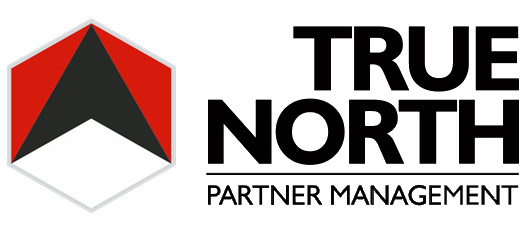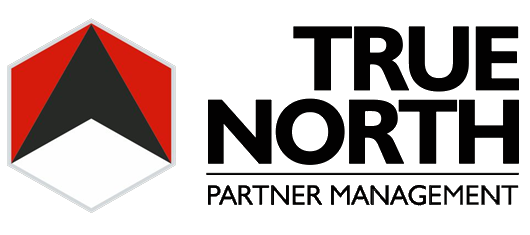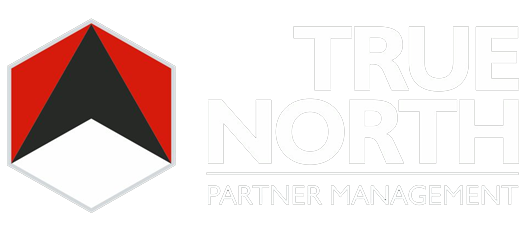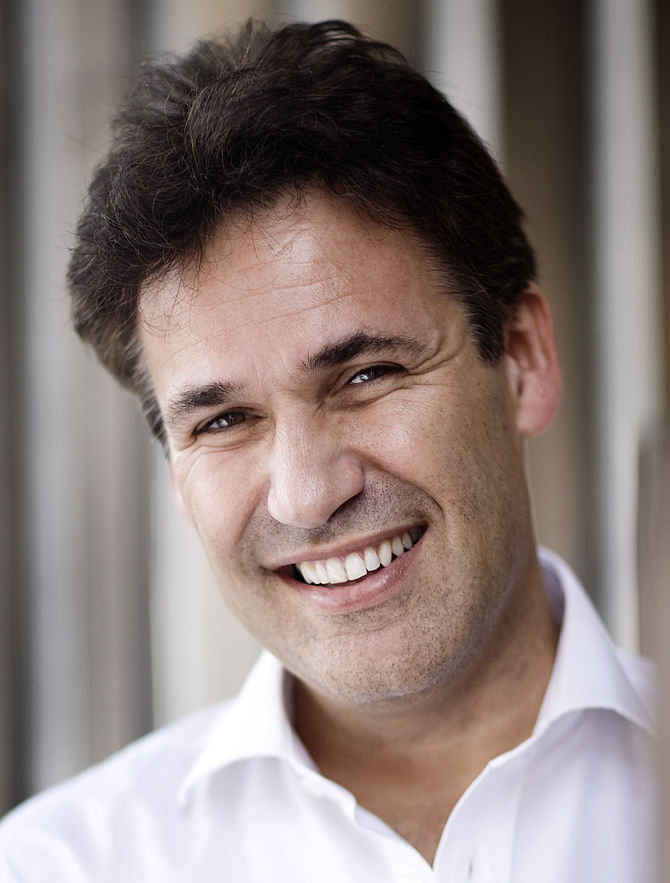The following post originally appeared on Forbes | Mar 21, 2014
It wasn’t but a minute into my conversation with Richard Susskind–author, professor, consultant, and most pertinent to our discourse, legal futurist–that I was transported in time; not forward, interestingly, but backward, revisiting a trip to a local veterinarian’s office in my younger years…
My mother bred German Shepherds, and our very first went by the name of Mickey. Weighing in at 120 pounds, for a purebred, stud Shepherd, he was a massive specimen, and exemplified all of the great things that a dog of his ilk should: fiercely loyal, protective, gentle with children, loving to the family, and playful at just the right times. He was a great pet, and quickly became a part of the family. But eventually, I left for college, and he and I grew apart.
Years passed, and as any pet owner knows, eventually Father Time comes to collect, and if death isn’t natural, one final trip to the vet is inevitable. My parent’s bond with the dog was too strong. They couldn’t bring themselves to put him down. And though I was away at college at the time, I was summoned to shoulder the burden. At that point in my life, inexperience with death and my distance from the dog–both literally and metaphorically–made me feel well suited to carry out his euthanasia. But on the drive to the vet, as I watched Mickey through the rear view mirror, lying down, panting faintly and taking in the light of his last day, reality washed over me. I wept.
Though 20 years old at the time and a tough college football player, the gravity of such a fundamental thing as death was, unsurprisingly, too much for me to control. And as I carried what was the equivalent of a family member to the examination table, I found myself oddly comforted by the veterinarian’s voice. He was an older man, and I can’t forget the stark contrast between his white lab coat and tanned, weathered skin. Primarily a farm vet, he had been around the block more often that anyone cared to count. Death was a familiar visitor to his clinic, and to him, my trauma was little more than a day at the office. He was not without compassion, though, and as we spoke about the unfolding events, there was a calmness about him, an assuredness in his voice, a confidence that only experience and wisdom can bring. He carefully took Mickey from my hands, and for the first time since the ordeal began, my troubled mind found some desperately needed peace from his words.
Flash forward twenty years, and I was having déjà vu. In a British-speckled, Scottish accent, and with an almost eerie exactitude, Richard Susskind was describing the current and impending realities of another fundamental and powerful thing: change. Specifically, we were discussing change in the legal industry, and with a calmness and precision that only a battle-tested industry veteran could exude, for the first time, in a long time, I came to see that for some law firms, the light at the end of tunnel is the sun, and not a train. And as Susskind delved deeper into the subject matter, much like my trip to the veterinarian’s office, I found a bit of peace.
Having personally written a book about failed firms (due out in late April), I am terribly aware of the monsters that await the legal profession; a reality that will come to bear with or without permission from the legal Titans. Despite the clouds gathering on the horizon, much of today’s legal leadership stands steadfast, choosing riskily to meet the juggernaut head on. There is still hope, however, for those guardians of the industry that remain astute and flexible. Below are some of the more salient points of our conversation:
On The Legal Services Act of 2007
David: I’d like to begin with the Legal Services Act [of 2007]. Why do you think that more firms have not gone public in the UK?
Richard: I’m not sure going public is the main issue or the main consequence of liberalization. What’s most interesting, I think, is the entry into the UK market of new entrepreneurial thinkers, new capital, and new service ideas, rather than injection of funds into old legal businesses. I’m clearly of the view that liberalization is a far greater interest to new potential players rather than the old.
By and large, what we’ve seen is not really so much interest [in outside capital] amongst the leading firms, many of whom say they actually have sufficient capital for any of the investments they need to make. I question that because there are many projects that they would never imagine making because they don’t have sufficient funds for them. Of course they’ve got enough funds to fund what they currently do, but the bigger question is: Are there sufficient funds to fund what they have not yet imagined they might do?
But as things stand, the major interest is amongst a small number of innovative, medium-sized firms, and more generally, new entrants to the market who are thinking of new ways of delivering legal services and real excitement to the market place. But why don’t the traditional legal firms go public is the question that’s often asked, and you’re asking.
[Organizations] that go public, often it’s in the interest of a small number of owners who want to benefit from it. But often, it’s a way, of course, of raising capital for major investments. I think it remains the case that most major law firms do not see the need for, or the scope for, major investment. The challenge there is they’re still thinking of their old business model.
But, for example, an illustration I often give is banks that have been expressing an interest in coming together and undertaking compliance work through one service provider. So a project for a major law firm might be to set up a shared services center that might house hundreds of compliance specialists serving nearly a dozen investment banks. That is not the kind of investment that any law firm in the world could really comfortably afford on its own. But the point is, it’s not the kind of investment that any firm in the world is currently thinking of because they tend to be thinking, what is it we do today, that might benefit from greater funding, and because they haven’t got an answer to that, they then will tend to say, ‘The old model is working well enough.’
It’s hard to convince a room full of millionaires that they’ve got their business model wrong. But it’s not obvious to them that they need the capital. Whereas I’m seeing, actually, if you rethink your business model, if you have radically innovative new ideas over the ways in which you might engage your clients or in which you might resource your delivery, then you will quite naturally see that you need new sets of people; you need new systems; you need to invest in processes; you need to set up perhaps a power plant or a factory to undertake the more routine work.
On the Biggest Strategic Issue Facing Modern Law Firms
David: Associate ranks are shrinking, which is going to decrease leverage, and therefore, money coming in to the firm. Inherent to this is a particular class of partners that are being paid more than they are worth at this point. The reality of that is that as it stands today, there is a sizable group of any partnership that eventually isn’t going to be making 6, 7, 8, or 9 hundred thousand, or a million dollars a year, anymore. With that in mind, what do you think is the biggest issue that firms face today?
Richard: Possibly the biggest strategic issue facing any law firm in the world today is the extent to which they continue doing routine and repetitive, administrative, process-based work. What clients are saying is ‘we don’t mind paying law firms high fees for the difficult stuff, but on a big dispute, if you look at the document review exercise, or on a big deal, if you look at the due diligence exercise, we don’t really need expensive young people in expensive buildings in expensive cities doing this.’
The question then arises: What is your alternative sourcing strategy? How, as a law firm, are you going to undertake that work? Because in England, we’re already seeing clients saying to top firms, ‘You do the difficult stuff and give the more routine work out to lower cost regional firms, or hand it over to legal process outsources, or use contract attorneys, or use a variety of technologies.’
[So] it all depends on what you do with the bottom of the pyramid. For me, actually, if you get this right, if you set up your factory or process plant that is undertaking routine work in a different way, for some of them, that could be a great source of profit. I want to say that a law firm should have two businesses: advisory and process types of businesses. I know we [lawyers] didn’t go to law school to set up a process business, but actually, that’s what clients want, and you need to think, do we do that ourselves, or do we let others do it? And I believe the firms that actually think deeply, do the process mapping, the process analysis, invest in the technology, invest in project management, they’re the ones who will be able to have a complementary business alongside their advisory business.
The [new] advisory business is not nearly as well geared, or as well leveraged, as [the traditional model]. But, there could be a throughput in their process business that could more than compensate. Now, I don’t think all law firms can do that… but if they don’t, the publishers will, and the legal processes outsourcers will, and all the rest of it.
But I’m not entirely pessimistic that legal businesses [can’t survive]. I think legal businesses can still be profitable, but they need to think more imaginatively about how they resource the bottom of the pyramid, and how they make money from the bottom of the pyramid. All of that said, it seems to be inevitable that the bottom of the pyramid will be subject to a great change, and many law firms will suffer [if they don’t strategically shift].
On Differentiation and Competitive Advantage
David: There are a number of firms who have very soundly planted themselves in the landscape and have a competitive advantage. They have a brand. I wouldn’t say they’re completely beyond reproach, but for all intents and purposes, they have earned a spot and it’s going to be very difficult to change that. With that being said, applying the 80/20 rule here, I have found–and it continues to surprise me–how few of these firms are able to articulate how they are different from their competitors. A few of them can’t even articulate who their actual competitors are. The revenue they’re still able to generate like this is unbelievable. This is very quickly coming to a halt, however, and I’ve seen the changes happening. I believe that there are going to be a number of other failed firms within the next few years. What are your thoughts?
Richard: I agree with that, entirely. I think not being liberalized actually delays the amount of change. Because in the UK, you have new businesses like Riverview Law, which is partly owned by DLA Piper, coming to the market with a new proposition; not for legal process work, but for legal advisory outsourcing, [which hastens the change in the UK]. It’s typical with a new kind of competitor, whether or not they’re an ABS (alternative business structure). There is an atmosphere in the UK of liberalization. There’s an atmosphere that attracts more entrepreneurial thinking. What I believe [is that] in the US, it’s both feared and discouraged.
I think it’s a competitive disadvantage in the United States because what you’ll see in liberalized regimes over the next few years are more impressive, more imaginative legal service providers, law firms, and more satisfied global legal clients which will give rise to general counsel wanting similar service from the US, and the US not being able to deliver, not having the capital resource, not having the innovation infrastructure, not having the capability to alternatively resource, and so forth.
So it’s an electrifying issue. My prediction is that for 2020 in the US, there’ll be some substantial liberalization, because I think it is going to happen not federally, but on a state basis. 5 or 6 of the states I’ve visited have been talking precisely about that. It’s very hard to find anyone–even on the 20/20 commission [of the ABA]–who will defend the decision not to allow alternative business structures, and not to liberalize.
On the Pressures on Middle-tier Firms
David: [The pressures discussed so far] are a major problem for many second-tier firms; they don’t, and won’t have a competitive advantage. At best, they have rainmaking partners that have good relationships. But, even those relationships are going by the wayside as general counsel become savvier; because they are being increasingly pulled out of large law firms, the value of the rainmaker’s relationship has taken a major, major hit. Even if you could call the relationships a competitive advantage–which they aren’t–this further hamstrings the firm’s ability to get work in the near future, which could be a catastrophe if it’s held on to for too long. What are your thoughts?
Richard: One of the transgressions in all of this, to frame it in a different way, is how much legal work is pricing-sensitive, and who gets that work? Because there are certain types of legal work–whether it be bet-the-ranch deals or bet-the-ranch disputes–where the work tends to gravitate to a limited number of outstanding brands, and it is often said that the fees charged by the law firms are neither here nor there in the broader context of the size of the deal or the size of the dispute.
I recently gave a keynote to a big law firm leaders’ conference in New York. There were 3 law firm leaders [in particular], and the discussion focused on this issue, [and they said] ‘We get what you’re saying, and it applies to second-tier firms, but leading firms have a ready supply of work that will always gravitate towards us, and the clients are not really that fussed for these very big deals and disputes–[about] how much they pay.’
I think some things can be learned from that. I think one–and what you were saying yourself–is that those who are most threatened are those that are undifferentiated, second-tier firms who aspire perhaps to being in a higher tier, but struggle to convince the market that they have distinctive capabilities. And they are probably getting mid-market deals and medium sized disputes where, frankly, they are very price competitive. And if you have your pyramid structure in support of that work, for the reasons you suggested earlier, they’re under serious threat. So I’m in no doubt that these fairly large second-tier firms–from size 25-100 in the Am Law–they will all be under this considerable pressure.
What’s more debatable is the extent to which the other 25% are safe. The point I make is if one or two of these firms broke rank and actually still had their wonderful brand, but decided to set up the process part of the factory–in short, had a very compelling price proposition as well as a good brand–then that would radically change the game.
It’s not yet happened, but my prediction is it will happen. It won’t happen in the next few months, but it will happen in the next few years, where one or two pretty great firms will say, ‘We can put together a new proposition for the market which says not only do we have fantastic lawyers, but we also have an unbeatable pricing proposition,’ and that will both cause the other firms to rethink their strategy, and also, I think, really put greater pressure on the second-tier. I see it [all] likely unfolding by 2020.
One the Nature of Legal Work
David: I think another question of interest–in listening to you talk–is how work much is bet-the-farm, and how much is not? I think a lot of the second tier firms think that they have bet-the-farm work, and it’s just not.
Richard: I think you put your finger on a key point here, because my one view is that the market of price-insensitive work is actually smaller than most major leading firms would want us to believe, and secondly, I think it’s diminishing. There’s another factor here, because when you think of what I call in my book, decomposition–and sometimes it’s called disaggregating–but when you break down work, even bet-the-ranch deals and disputes, you can say, ‘Okay, it’s absolutely mission critical, but we have 10 million documents to review, and shareholders have every right to expect that even though this is a terribly important case, that we’re still making sure that our work is done at a reasonable cost.’
It seems to me that once you disaggregate, once you start breaking down work, then there’s no such thing as a price insensitive dispute or deal; there’s only price insensitive components of that deal.
This is a vital point I don’t think many firms have quite grasped yet. So, if that’s happening in the UK–a major deal is being shared, as I mentioned earlier by a magic circle firm and a regional firm–the price insensitive component might be the bit that the magic circle firm is doing, but they’ve lost the bottom of the pyramid to another organization. So if you’re a top-tier firm who thinks you can rely on price insensitive work, I think you’re probably overstating the amount of work [there is] in that category. I think you should note that that category is probably reducing because of pricing pressures. And, inherently, once you start disaggregating or decomposing work, you’ll find that a lot of your means of profitability is swept away in any event.
On His Biggest Antagonists
David: Do you have a prototypical antagonist within the firms that you consult with?
Richard: There’s not a single category, other than this: that the high performing partners in successful practice areas tend to be the ones who are the most vocal opponents. They fall into my category of: ‘It’s hard to come into a room full of millionaires that got their business model wrong.’ So if you have a very strong corporate practice, you’d be someone flying high, lots of deals coming through, clients prepared to pay on the old model; they say ‘Why on earth should we be rethinking the way we deliver our services.’
I’d say it’s not a single practice, because sometimes it’s a real estate practice, sometimes it’s a dispute practice, sometimes a corporate practice. But, for perfectly understandable reasons, practice heads and partners who are trading well tend to be most skeptical about the need for change. There’s no signage of a burning platform for them. But those who are under pressure–pricing pressure, competitive pressure, perhaps recruitment pressure–they find that my messages resonate more.
On His Predictions For The Future
David: Broadly speaking, what do you see for the future of BigLaw?
Richard: There are three drivers of change in the profession: cost pressure, liberalization, and technology. The cost pressures are pretty overwhelming for clients just now. They’re saying to me they need to reduce the legal spending by 30-50%. They’re also saying we don’t mind paying for the experienced lawyers at the top of the pyramid; the law firms are going to have to rethink the bottom of the pyramid. I don’t think it’s going to change in the next two years. Probably over a period of 10 years we’ll see this change, but we’ll see a very different business structure emerging.
My guess is there will be around 20 or so elite firms around the world that will still be immensely profitable because a lot of the work will still be price-sensitive and so forth. The second-tier firms around the world will really struggle because they’ve made a lot of their money from a broad-based pyramid. I can’t see how you escape from that conclusion. I think many law firm leaders want to say it’s not going to happen as quickly as you think. That may be right. That maybe okay for the current leaders, but I don’t think it poses well for the next generation coming through.
In Closing
Even the most calloused thumb on the pulse of BigLaw can sense the state of flux. In the US, in particular, whereunbundling was green-lighted in 2007, and recent economic pressures have finally charged clients with the horsepower to leverage it, there is a true issue at hand. While enough competition has squeezed in to affect bottom lines, there still isn’t enough to spark–if I can quote Stephen Covey–a paradigm shift, yet. Because the UK, AU, and any other deregulated competition is being prodded along their evolutionary tracks much more aggressively, the US may be left exceedingly vulnerable to competition that can better meet future client demands.
As with any institution facing adversity, two themes arise: recognition and remedy. Some firms are having difficulty recognizing, or more pointedly, accepting, that the storm clouds of full paradigm-level change are on the horizon. For the more sentient leaders, however, there is guidance: Susskind is the proverbial Moses for the forward-thinking, modern law firm, and two of his books in particular–The End of Lawyers?: Rethinking the Nature of Legal Services, and Tomorrow’s Lawyers: An Introduction to Your Future–offer responsible leadership a view to an answer.



